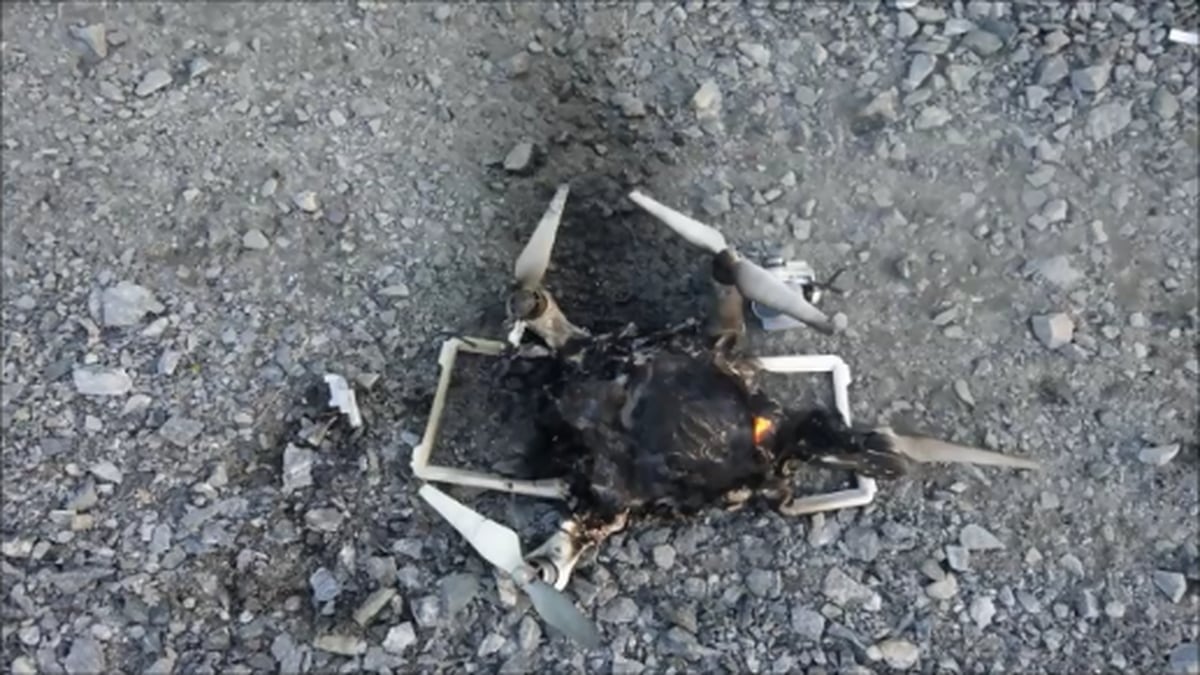Remington drone loads represent a fascinating intersection of engineering and practical application. This exploration delves into the capabilities of various Remington drone models, examining their payload capacities, the types of loads they can carry, and the factors influencing their efficiency. We will consider optimization techniques, environmental impacts, and future technological advancements that promise to reshape the potential of these versatile machines.
From analyzing the maximum weight each model can lift to discussing the safety regulations surrounding different cargo types, this analysis provides a comprehensive overview. We’ll also investigate how environmental conditions and technological improvements affect payload capacity and flight performance, offering insights into the evolving landscape of Remington drone technology.
Remington Drone Models and Payload Capacity

This section details the various Remington drone models, their payload capacities, and a comparison with competitors. Factors influencing payload capacity are also examined.
Remington Drone Model Specifications
| Model Name | Payload Capacity (kg) | Dimensions (cm) | Notable Features |
|---|---|---|---|
| Remington RX-800 | 15 | 80 x 60 x 30 | High-speed flight, advanced obstacle avoidance |
| Remington RX-500 | 8 | 60 x 45 x 25 | Long flight time, compact design |
| Remington RX-200 | 3 | 40 x 30 x 15 | Lightweight and portable, ideal for smaller payloads |
Payload Capacity Comparison with Competitors

A comparison of Remington drone payload capacities with similar priced models from other manufacturers reveals competitive performance in the mid-range market segment.
- The Remington RX-800 offers a comparable payload capacity to the competitor model “SkyHawk X1000” at a slightly lower price point.
- The Remington RX-500 provides a greater payload capacity than the “AeroLift 450” while maintaining a similar flight time.
- In the entry-level segment, the Remington RX-200 offers a competitive payload capacity compared to the “DroneFly Mini” with superior image stabilization features.
Factors Influencing Payload Capacity
Several key factors influence a Remington drone’s payload capacity. These factors are intricately linked and must be considered in unison for optimal performance.
- Motor Size and Power: More powerful motors can lift heavier payloads. Larger, more powerful motors generally allow for heavier payloads.
- Battery Capacity: Larger batteries provide more flight time and power, allowing for heavier payloads. A larger battery provides the necessary power to lift and maintain flight with a heavier load.
- Airframe Design: A robust and lightweight airframe is crucial for maximizing payload capacity. A well-designed airframe can reduce drag and increase efficiency, thereby enabling a greater payload.
Types of Loads Carried by Remington Drones: Remington Drone Loads
Remington drones are versatile and can carry a range of payloads. This section Artikels the common load types and associated safety considerations.
Common Payload Types

Remington drones are used in diverse applications, each requiring specific payload considerations.
- Cameras: High-resolution cameras for aerial photography and videography, including thermal imaging cameras for search and rescue operations.
- Sensors: Environmental sensors (temperature, humidity, air quality), gas leak detectors, and multispectral sensors for agricultural monitoring.
- Delivery Packages: Small packages for delivery services, including medical supplies and emergency aid.
Safety Considerations and Regulations
Safe transportation of payloads requires adherence to regulations and best practices. Understanding these aspects is crucial for safe drone operation.
- Weight Limits: Never exceed the drone’s maximum payload capacity. Overloading can lead to crashes and damage.
- Center of Gravity: Proper weight distribution is essential for stable flight. Uneven weight distribution can destabilize the drone, causing it to crash.
- Regulatory Compliance: Adhere to all local and national regulations concerning drone operation and payload transportation.
Hypothetical Multi-Payload Scenario
Imagine a scenario where a Remington RX-800 is used for efficient delivery of multiple payloads during a disaster relief operation. The drone carries a package containing medical supplies (2kg), a thermal camera (1kg), and a small searchlight (0.5kg), all carefully balanced to maintain stability. The drone successfully delivers the payloads to the affected area, demonstrating the versatility and efficiency of Remington drones in challenging conditions.
Remington Drone Load Optimization and Efficiency
Optimizing payload weight distribution and minimizing overall weight are crucial for maximizing flight stability and range. This section explores techniques and strategies for achieving this.
Understanding Remington drone load capacities is crucial for efficient operation. To visualize potential flight paths and assess environmental factors, checking the real-time view from the port dover live camera can be beneficial. This visual aid helps in planning optimal Remington drone loads and ensuring safe, successful missions. Ultimately, effective load planning for Remington drones enhances operational efficiency.
Optimizing Weight Distribution
Efficient weight distribution is crucial for flight stability and maneuverability. These techniques ensure safe and effective payload transportation.
- Center of Gravity: Maintain the payload’s center of gravity as close as possible to the drone’s center of gravity.
- Secure Mounting: Securely attach the payload to the drone to prevent shifting during flight.
- Balanced Loading: Distribute the weight evenly across the drone’s payload platform.
Minimizing Payload Weight
Reducing payload weight without compromising functionality is key to extending flight range and increasing efficiency. Lightweight materials and efficient designs play a vital role.
- Lightweight Materials: Use lightweight yet durable materials for payload construction (e.g., carbon fiber, aluminum alloys).
- Modular Design: Employ modular designs to reduce unnecessary weight by only carrying essential components.
- Miniaturization: Utilize miniaturized components to reduce the overall size and weight of the payload.
Impact of Battery and Propulsion System
The choice of battery and propulsion system significantly affects payload capacity and flight time. This table provides a comparison of different configurations.
| Battery Type | Motor Type | Payload Capacity (kg) | Flight Time (minutes) |
|---|---|---|---|
| LiPo 12000mAh | Brushless 2800KV | 10 | 30 |
| LiPo 8000mAh | Brushless 2200KV | 6 | 20 |
Impact of Environmental Factors on Remington Drone Loads
Environmental conditions significantly impact a Remington drone’s payload capacity and flight performance. This section discusses the effects of wind, temperature, and altitude.
Effects of Wind, Temperature, and Altitude
Adverse weather conditions directly affect a drone’s lift capacity and overall flight performance. Understanding these impacts is essential for safe operations.
- Wind Speed: High wind speeds reduce lift capacity, necessitating a reduction in payload weight.
- Temperature: Extreme temperatures (both high and low) affect battery performance and motor efficiency, reducing payload capacity.
- Altitude: Higher altitudes result in thinner air, reducing lift capacity and requiring payload adjustments.
Adjustments to Payload and Flight Plan
Weather conditions often necessitate adjustments to the payload weight or flight plan to ensure safe and successful operations. Adaptability is key to maintaining mission success.
- Reduced Payload: In high winds or extreme temperatures, reducing the payload weight is crucial for safe flight.
- Flight Path Adjustments: Avoid flying in strong winds or turbulent air conditions. Choosing alternate flight paths may be necessary to avoid difficult weather.
- Delayed Flight: Postponing a flight until weather conditions improve ensures safety and mission success.
Challenges with Sensitive Loads
Transporting sensitive or fragile payloads presents unique challenges in varying environmental conditions. Special handling and protection are often required.
- Vibration Dampening: Employ vibration dampening materials to protect fragile payloads during flight.
- Temperature Control: Utilize temperature-controlled containers to maintain optimal temperature for sensitive payloads.
- Protective Packaging: Use robust and protective packaging to shield payloads from impact and environmental factors.
Future Trends in Remington Drone Payload Technology
Advancements in battery technology, motor efficiency, and airframe design will significantly increase the payload capacity of future Remington drones. This section explores potential advancements and applications.
Advancements in Drone Technology, Remington drone loads
Ongoing research and development will continue to improve drone capabilities, enabling heavier and more complex payloads.
- Improved Battery Technology: Higher energy density batteries will extend flight time and increase payload capacity.
- More Efficient Motors: More powerful and efficient motors will allow for heavier payloads with longer flight times.
- Advanced Airframe Designs: Lightweight yet robust airframe designs will further optimize payload capacity.
Potential New Applications
Increased payload capacity opens doors to a wider range of applications for Remington drones.
- Larger Package Delivery: Delivering larger and heavier packages in remote or inaccessible areas.
- Heavy Equipment Transportation: Transporting heavier tools and equipment for construction and maintenance in challenging terrains.
- Emergency Response: Delivering larger quantities of emergency supplies and equipment to disaster zones.
Hypothetical Future Scenario
Imagine a future where Remington drones, equipped with advanced battery technology and powerful motors, routinely transport heavy construction materials to build remote infrastructure. These drones autonomously navigate complex terrains, significantly reducing construction time and costs while minimizing environmental impact. This represents a significant advancement in drone technology and its impact on various industries.
Understanding Remington drone loads is crucial for maximizing their utility across diverse applications. This exploration has highlighted the importance of careful payload optimization, the consideration of environmental factors, and the exciting potential of future technological advancements. By addressing these key aspects, we can unlock the full potential of Remington drones and pave the way for even more innovative applications in the years to come.
Essential Questionnaire
What are the typical maintenance requirements for Remington drones carrying heavy loads?
Regular inspections of motors, propellers, and the airframe are crucial. More frequent battery checks and potential adjustments to maintenance schedules are needed compared to lighter loads.
Remington drone loads often necessitate careful consideration of weight distribution for optimal flight performance. Understanding industry best practices is crucial, and a good example of innovative approaches can be found by researching companies like archer aviation , whose advanced technologies offer valuable insights. This knowledge can then be applied to optimizing Remington drone loads for enhanced efficiency and safety.
How does insurance coverage differ for Remington drones based on payload weight?
Insurance premiums generally increase with payload capacity due to higher risk. Consult your insurance provider for specific details.
What are the legal implications of exceeding a Remington drone’s maximum payload capacity?
Exceeding the maximum payload can lead to fines and legal repercussions, potentially impacting licensing and operational permits. Always adhere to manufacturer specifications.
